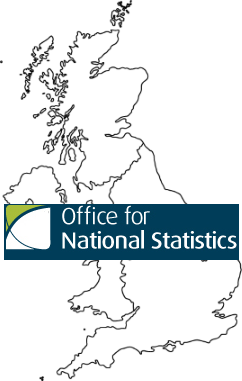New ONS figures: Immigration estimated at 1.2 million in 2022 and emigration at 557,000
The Office for National Statistics (ONS) has today released the latest immigration statistics covering the period January to December 2022.
 The full ONS bulletin is available here.
The full ONS bulletin is available here.
As expected, the figures show that net migration in the year ending December 2022 was the highest on record at an estimated +606,000, though the figure is lower than some widely reported forecasts in the media.
According to the ONS, immigration was an estimated 1.2 million in 2022, and emigration an estimated 557,000.
As the ONS always stresses, its estimates are provisional, experimental and have a degree of uncertainty around them.
Non-EU immigration was estimated by the ONS at 925,000 for 2022, an increase of 287,000 compared with 2021, while EU immigration was an estimated 151,000, down 45,000 compared with 2021.
Non-EU long-term immigration in 2022 saw an estimated 235,000 arrivals on work visas and 361,000 arrivals on study-related visas. An estimated 172,000 people arrived on humanitarian routes, such as from Ukraine and Hong Kong.
The ONS is also, for the first time, now including asylum seekers in its estimates. People arriving to seek asylum made up 8% of non-EU immigration in 2022 (76,000 people).
Jay Lindop, director of the ONS's Centre for International Migration, noted:
"A series of unprecedented world events throughout 2022 and the lifting of restrictions following the coronavirus (COVID-19) pandemic led to record levels of international immigration to the UK.
"The main drivers of the increase were people coming to the UK from non-EU countries for work, study and for humanitarian purposes, including those arriving from Ukraine and Hong Kong. For the first time since using our new methods to measure migration, we have also included asylum seekers in our estimates, with around 1 in 12 non-EU migrants coming via this route.
"There are some signs that the underlying drivers behind these high levels of migration are changing. As lockdown restrictions were lifted in 2021, we saw a sharp increase in students arriving. Recent data suggests that those arriving in 2021 are now leaving the country, with the overall share of non-EU immigration for students falling in 2022. In contrast, those arriving on humanitarian routes increased over the 12 months. Evidence also suggests immigration has slowed in recent months, potentially demonstrating the temporary nature of these events."
Jonathan Portes, professor of economics at King's College London, noted on Twitter with regard to the ONS statistics: "Migration was at record levels last year, but has stopped rising and is now likely to fall, with fewer refugees and higher student emigration. So-called 'forecasts' were wrong. … [N]et migration is, according to these stats, no longer rising. In year to December 2022, it was down, not up, compared to year ending October 2022, and was unchanged from year to June 2022. Emigration has risen quite sharply and has been rising faster than immigration."
Portes further noted that, more broadly, the figures show the continued impact of Brexit and a reorientation of UK migration flows away from the EU and towards the rest of the world, especially India.
Professor Portes added that net migration is likely to be lower in 2023 than in 2022, and the narrative that immigration is spiralling ever upwards or is out of control is simply false.
The Home Office also today published its immigration statistics for the year ending March 2023, which can be accessed here.
They show the backlog of asylum claims awaiting a decision continues to grow.
The Home Office said: "At the end of March 2023, there were 133,607 cases (relating to 172,758 people) awaiting an initial decision. This is 50% more than the number of applications awaiting an initial decision at the end of March 2022 (89,344, relating to 109,735 people). The number of cases awaiting an initial decision has increased over the last 10 years and more rapidly since 2018, when there were 22,100 cases awaiting an initial decision (at the end of March)."
There was, however, a significant increase in the number of initial decisions made, with the Home Office noting: "In the year ending March 2023, there were 19,706 initial decisions made on asylum applications, 35% more than in the previous year. This suggests a return to pre-COVID-19 levels of decisions (20,766 decisions were made in 2019), which may be in part due to the increase in the number of asylum decision makers employed by the Home Office."
Just under three-quarters (74%) of the initial decisions in the year ending March 2023 saw a grant of refugee status, humanitarian protection or alternative forms of leave.